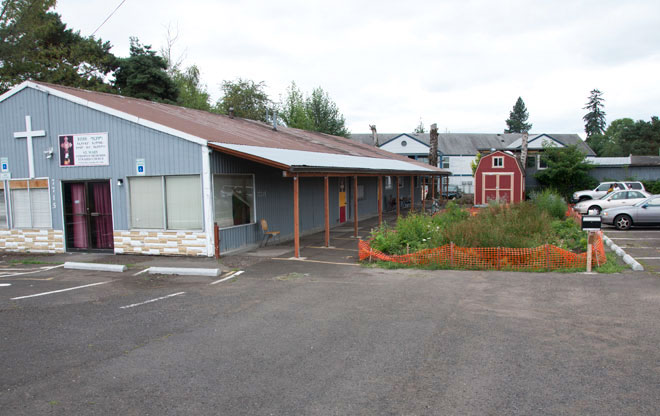
Fixing the Problem
The parking lot was formerly fully paved. The church sits at the low point of the property. Costly repairs to a drywell system failed to fix the flooding problem. The project removed asphalt around the perimeter and created a large rain garden at its core, which collects the majority of the stormwater and infiltrates it on site.
Image: Rachel Hill 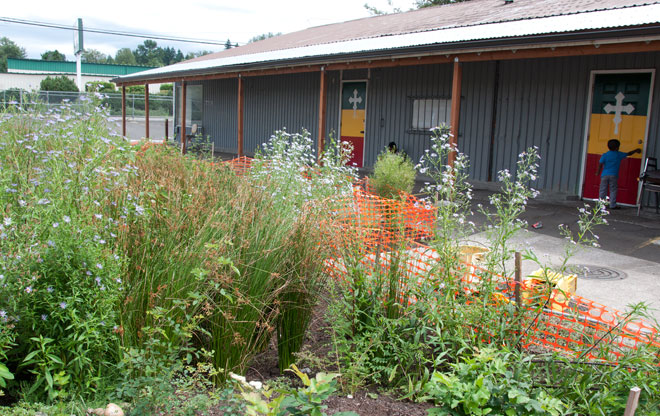
A Lush Garden
Rushes are planted where inundation may occur. Native plants such as salal and sword fern create a lush and contextually-blended garden around which kids play and events are held.
Image: Rachel Hill 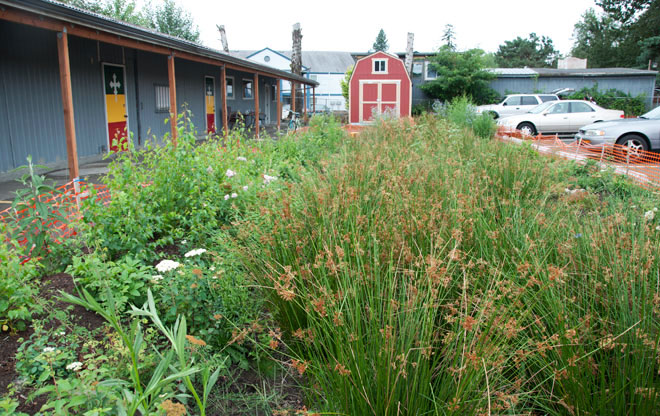
The Separation of Church and Car
The rain garden swale separates the parking area from the church. The church sits on busy 92nd Avenue, just off of Interstate 205 in east Portland. Creating separation from the vehicle-dominated world is a key benefit in the design.
Image: Rachel Hill 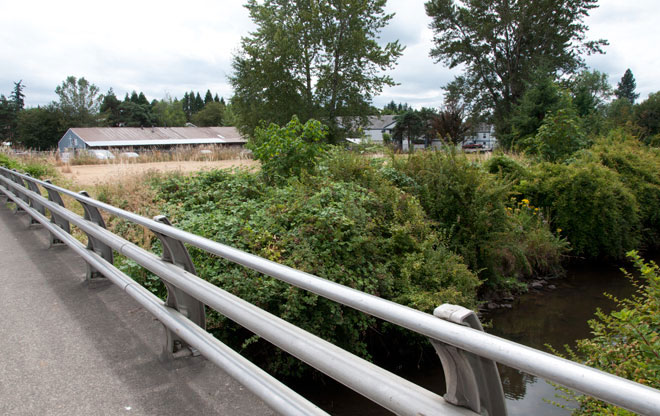
Nearby Riparian Corridor
To the north, the church’s neighbor is Johnson Creek. This natural riparian corridor in the middle of the city is such a gem that the city created an extensive trail corridor, the Springwater Trail, alongside it.
Image: Rachel Hill 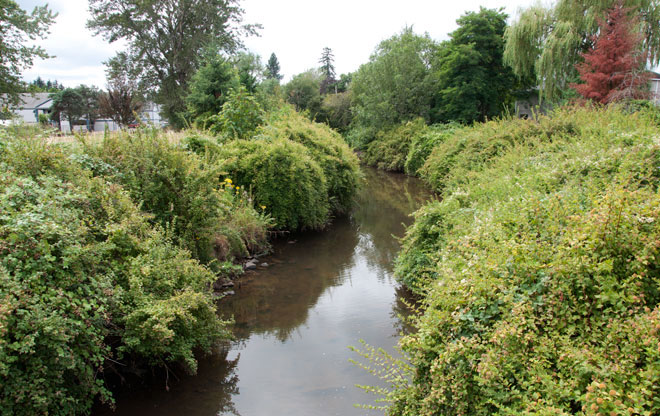
Creating Connections
While other cities have turned their backs on urban waterways, channelizing them in concrete, Portland has left Johnson Creek’s wild flow unaltered. The project helped the church’s congregation understand their part in this larger watershed story. This type of contextually-rooted environmental education has broader and more lasting impacts for the congregation and the community. Connections are created, outside of property lines. The community has a new sense of pride and wants to protect the natural systems of which they are a part.
Image: Rachel Hill